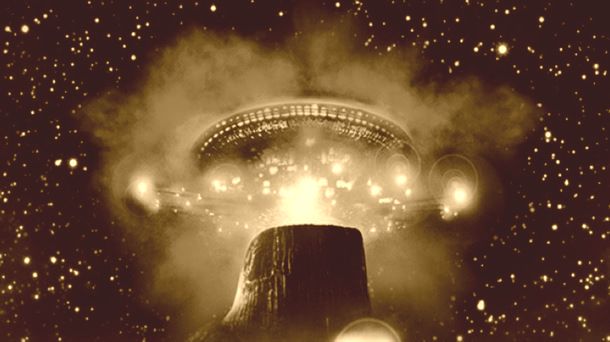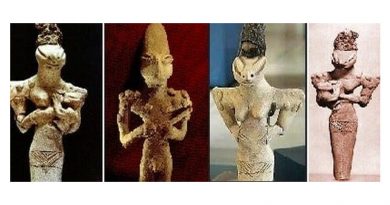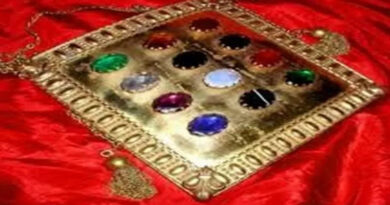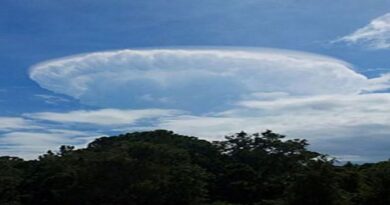Jews obliged from the beginning to accept the Torah?
“Your grave will be here”
According to rabbinic tradition, the Jewish god Yahweh would force with force all Jews to accept the Torah (1).
In the Babylonian Talmud the Rabbi Amora Avdimi bar Chama bar Chasa (III-IV century), commenting on the words of Exodus 19:17, declared: ‘ “They placed themselves under the mountain.” This teaches us that the Holy One, blessed be He, overturned the mountain over them like a [inverted] barrel, and said to them: “If you accept the Torah, you’ll be fine; if not, here will be your burial. התורה מוטב. ואם לאו, שם תהא קבורתכם “(bShabbath 88a) (2).
What says a Midrash
The Mekhilta DeRabbi, a midrash exegesis of the Book of Exodus of Rabbi Akiva School, comments, by the mouth of Shimon Bar Yochai, the same biblical words, even providing additional “scriptural”
“And they placed themselves under the mountain, teaching that the Holy One, blessed be He, has imposed the mountain over them like a barrel, and said,” If you accept the Torah with you [good], if not here is your grave “and at that moment all weep and will pour their heart like water in repentance and say,” We will do everything the Lord has said and obey “(Exodus XXIV, 7). ד”א ויתיצבו בתחתית ההר מלמד שכפה עליהם הקב”ה את ההר כגגית ואמר אם מקבלין אתם עליכם את התורה [מוטב] ואם לאו כאן תהא קבורתכם באותה שעה געו כולן בבכייה ושפכו לבם כמים בתשובה ואמרו כל אשר דבר ה ‘נעשה ונשמע (כ ” ד ז ‘) “(Mekhilta DeRabbi Shimon Bar Yochai, Exodus 19:17: 1) (3)
Shlomo Yitzhaqi (1040-1105), better known as “Rashi”, confirms:
From Tosafot, the medieval commentaries of the Talmud, it
appears that the Jews were probably terrified by the “flames” of
Yahweh on Mount Sinai:
“” He held the mountain over them like
a barrel “- Even though they had already said” We will do and we will
listen, “perhaps have retreated when they saw the great fire [on the
mountain] that caused their souls to go. ואע”פ שכבר הקדימו נעשה לנשמע שמא יהיו
חוזרים כשיראו האש הגדולה שיצאתה נשמתן והא דאמר בפ”ק דמס ‘ע”ז (דף ב 🙂
“(Tosafot, bShabbat 88a, 5: 1) (5)
Isaiah Horowitz (1570-1626) rabbi and religious
Bohemian renowned Levite and mystical Jewish Kabbalah, summarized as follows
its own custom;
The tradition
“Here is the comment of our sages (Shabbat 85) of Exodus 19:17:” They were under the mountain. ” God had threatened that if the Jewish people had not accepted the Torah Mountain would crush them to death. This is proof that the acceptance of the Torah by the Jewish people at Mount Sinai was an act done under duress. Until the decree of Haman was canceled, and the Jewish people accepted the Torah on an entirely voluntary.
This is what is meant when the Book of Esther describes that תורה had become אורה that what previously had been a weight now became for them a ray of light. An allusion to this revolutionary change in the attitude towards the Jewish Torah is found in the words והדת נתנה בשושן הבירה, “and the Law (religion) has been given really Shushan, the capital” (Esther 3:15) .והנראה בעיני שהכוונה אלו ד ‘נתהוו ביתר שאת ועוז ממה שהיו מקודם אף בעת שלוה. תורה שאמרו רז”ל (שבת פח, א) ויתיצבו בתחתית ההר, מלמד שכפה עליהם הר כגיגית כו ‘, מכאן מודעא רבא כו’, עד הדר קבלוה בימי אחשורוש. הרי שעד כאן היתה התורה באונס, ועתה קבלוה ברצון, זהו היתה אורה זו תורה מה שלא היתה מקודם לזה, וסימנך (אסתר ח, יד) והדת נתנה בשושן הבירה “(Shney Luchot Habrit, Torah Shebikhtav, Tetzaveh, Torah Ohr 48) (6).
According to this view, in short, those elected at the foot of Mount Sinai were forced with a tremendous threat from their tyrannical God, to accept and to appropriate the “Law”. Only later, at the time of Ester or Ahasuerus, they would be accepted on a voluntary basis (8). In fact, the deadly weight of that nightmarish mountain still looms and always over their heads.
Note.
- Rabbi Marcus Jastrow (1829-1903) gives the following definition: “The Lord has arched the mountain over them like a tank; Ab. Zar. 2b “(Jastrow 1). See.https://www.sefaria.org/Jastrow,_ גִּיגִּית .1
(2) Rabbi Isidore Epstein, The Babylonian Talmud, Seder Moed, Tractate Shabbat, Vol. III, Soncino Press, London 1938, p. 417.




